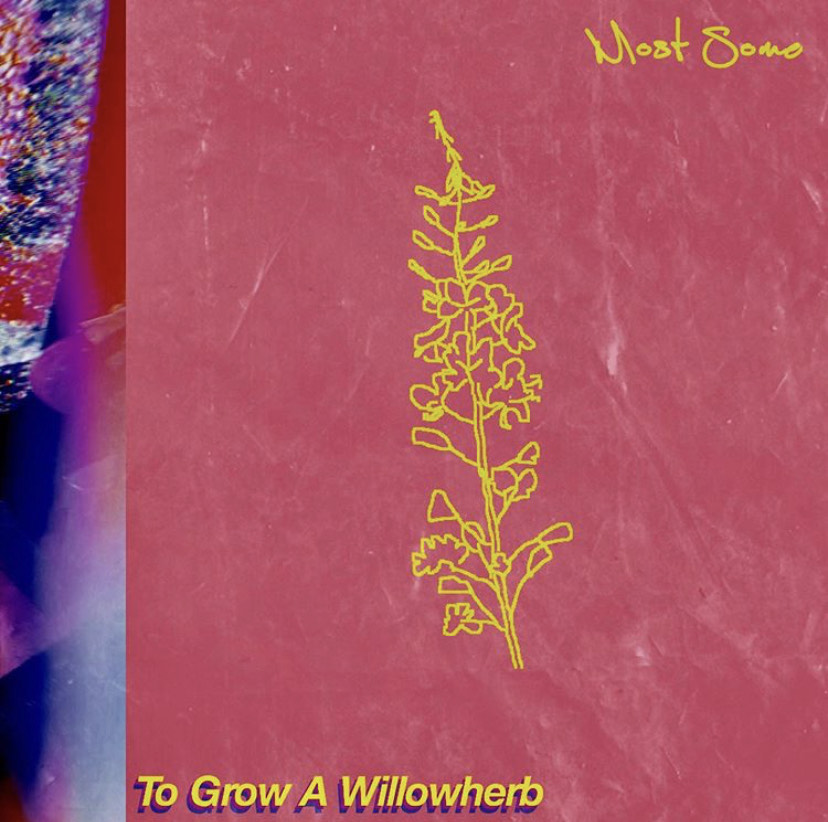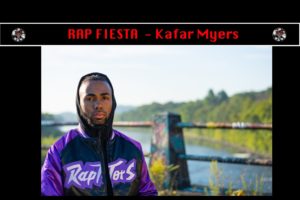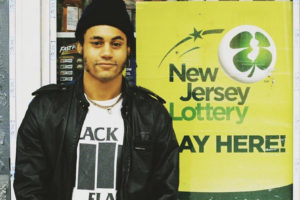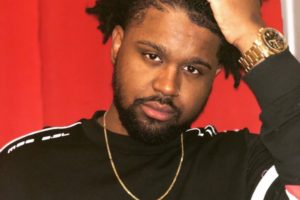Most Some | ‘To Grow A Willowherb’ Album Review
The duo known as Most Some consists of two creatives who break the average way of thinking through a multi-dimensional sound. Members, Griffin Zignoli and Quentin Brown make the listening experience quite pleasurable by allowing genres like dream pop, electronica, alternative hip-hop, and indie rock to come together as one. Between soft note ranges and a clear-cut rhyme structure, Most Some leaves fans worldwide in a peaceful mindset. Granted that life is chaotic, their music allows one to be on cruise control and ride over synth waves. And so, To Grow A Willowherb denotes their music entirely. Moreover, To Grow A Willowherb experiments with a fusion of genres. But the subject at hand doesn’t change. Yes, the message revolves around love. However, this same feeling comes in To Grow A Willowherb with uncertainty, questions, and proclamations. The two say that this album is perfect for late-night car rides and they haven’t steered listeners wrong. Zignoli adds that he hopes that people get nostalgic and grow from To Grow A Willowherb whereas Brown wants it to be relatable. To create this masterpiece, the band planned, spent time together and recorded consistently. Even though the feature list was set, Most Some would’ve loved to join forces with New Jersey natives, Willsteezalot, Ethan Ross and Service Dog. Most Some say, in terms of their niche, “We’re good at portraying complex emotions, telling stories and creating an atmosphere. The way we compliment instrumentals with each other is also a strength of ours in music.” To Grow A Willowherb is an album that will have you thinking of life’s many moments and love’s superpower. “We want our music to be personal, to push the boundaries.” Notable tracks like “Grapefruit,” “L.O.V.E,” “Mitsuda,” and “Stuck In A Dream.” let the mind roam free from worry and keep one at ease. Depending on the mood, Griffin’s favorite track is “Lately” or “Before I Die.” Brown, however, likes “Lately.”
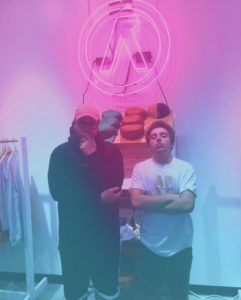
To Grow A Willowherb’s big bang commences after the beep in “Waiting to Fly West.” Throughout this song’s soundscape, one can expect a submerge-like influence over jazz and pop instrumentations. Additionally, eardrums are most likely to crash into a dreamy vocal pattern, one muffled voice message, triple-stacks of hi-hats, and futuristic synth waves. Moreover, “Waiting to Fly West” leaves the mind at ease. In between the lyrics, Most Some’s Quentin Brown wonders if someone they’ve grown close to will be their ‘calm after the storm.’ They just want to be held and at peace with this certain someone.
“What I Want” fills in as that peace (mentioned via “Waiting To Fly West.”) Sonically, the beat draws from pop and house. Likewise, it uses an upbeat tempo, xylophone riffs to get a certain message across. As lovestruck birds chirp away, singer Shae Lane’s vocal play follows. With a ting of candy-coated notes, Lane thinks of bittersweet love and wonders if she should stay or go. However, she takes into account that it could be the mind games. Moving forward, Most Some joins her. At one point, they even say that their ‘want’ is contradicting. Between airy hums and high energy, Most Some spread their poetic lyricism out. It’s safe to say that this song also induces many listeners with a Caribbean vibe. Brown just so happened to have fun making this track as well.
Then, “Grapefruit” keeps us calm with a nature feel and futuristic synth waves. Over the “I love you’s” and “I need you’s”, steady rhymes backtrack to the one they’ve made the song for, “Summer 16, saw you through the screen. I knew you from the scene. Best I ever had.” Ultimately, the song is full of complex note ranges that take a softer route in its delivery. Towards the end, you’ll hear a guitar solo that cries out for the artist’s true love. It adds a balance to the sentimental energy from start to finish.
“Lately” has a soundscape that takes listeners into another dimension. Sonically, it possesses a futuristic feel that draws from jangly pop and white noise. The instrumental components of the song are bird chirps, guitar riffs, drums, subtle organs and an 808. With a trancelike note range and felt rhymes, “Lately” allows vulnerabilities to be expressed. The chorus says “we don’t know if we’re wrong or right,” in means of making amends with a lover they’re quarreling with. They just want “rinse and repeat until the tension is lifted and conscious is clear.” This very song can also explain how this generation has been accustomed to moving on quickly instead of making it work.
At the pluck of a guitar, “Mitsuda” defines itself as an instrumental full of muffled piano progressions, soft, innocent crooning, bright 808’s sporadic hi-hats. Surprisingly enough, “Mitsuda” is a crossover between boom-bap, classical and pop. Granted, this has never been done before makes “Mitsuda” unique! Everything that this track consists of flows well together. During the breaks, “Mitsuda” lets the bass boom and pianos do a mini reversible style during its solo. These two elements take a playful route to the bright tempo. In simpler terms, this is a cute love song that leaves you struck by Cupid’s arrow deeper into the track. By the end, a spacey harp transitions into the backdrop and listeners lean in to hear some muffled rhymes from Griffin Zignoli.
“L.O.V.E” takes a dreamy approach towards Brown’s delivery and dark piano progression. At the 0:56 mark, a bellowing bass comes out. Then, Griffin Zignoli makes a way to speak his piece. Over a janga pop backdrop, cutting hi-hats and violin wails, Most Some’s Griffin Zignoli and their features go in about a love that makes their “demons less snappy”. It’s like when they’re around, every loathing thought or worry goes away. One even goes so far as to say that they don’t love themselves as much as they love their special someone. “L.O.V.E” was a track that took a lot out of Griffin. He says, “I was planning to write a verse on it [“L.O.V.E”] for a while but I couldn’t figure out what I was going to rap about and how to make it flow. But once I heard Lance’s verse and Koztals I figured out how I was going to do it.” Though they don’t want to say the “L” word yet due to prior circumstances, it’s internal. Hell, the group may scream it from a rooftop!
Afterward, “Stuck In My Dreams” embodies the waning state one feels as their counting sheep by reeling in hypnotic, distorted dings. Immediately, “Stuck In My Dreams” gets into enraged screams. Although it’s hard to tell what they’re saying, one thing is for certain: “Stuck In My Dreams” takes inspiration from heavy metal. The same ding heard earlier dies down and becomes an element of “Stuck In My Dreams.” Together with muffled hi-hats, Brown makes his way to calmly sing lines like “come with me I will guide you,” and “we can find go where the light shines, your heart beats right beside mine.” In pursuit, Tear brings “Stuck In My Dreams” back to its metal state. The tone they choose is exceptional in means of expressing their loyalty. This track particularly expresses how they’ll wait to be with someone they adore. There’s just something about them that makes it all worthwhile. This song’s title takes lead in the overall message. No matter who’s around, they’ll always choose the one that appears in their dreams.
“Headlights” on the other hand, starts off mellow. Foreshadowing Brown’s signature dream-like vocals, listeners are taken aback once the beat drops. As hi-hats triple-stack and snares cut in, the vocalist gets into a singsong pattern. Without delay, laser beam sound effects blast through the backdrop. Then, a whisper of rhymes flows in. During their verse, only the laser beams pattern can be heard. But the beat goes back into its original state afterward. Overall “Headlights” is another love ballad that doesn’t fail to keep listeners warm (especially in the season we call, winter.)
“Before I Die” allows the night time and white noise to be its source of inspiration. Amid cricket chirps, Brown uses his signature flair to speak about how we shouldn’t take each day for granted. Time works on behalf of the universe and any moment could be your last. Mid-song, “Before I Die” lets an acoustic guitar and violin progression transcend. Notable components of this track are the background vocals and its message. The time is now. Say how you feel. Do what you love. “Before I Die was the hardest for me as I just went through a break up while we were recording it,” Brown says.
And as a sweet finish, “Due East” takes a hypnotic approach to back vocals and the spacey organ. Brown takes part in what the organ keys hold as well. At most, “Due East” is naturally symphonic. Along “Due East” the vocalist even uses some auto-crooning. By the minute mark, it fuses triple-stacks of hi-hats, 808’s and a video-game pattern into the organ progression. Towards the end, “Due East” lets a robotic-like voice to speak over subtle guitar strings. Likewise, hums fill up over the white noise to indicate a truer form of peace.
In To Grow A Willowherb, listeners can also expect 3 surprises as well: “Brad’s Interlude,” “Belle Fourche Interlude,” and “Andy’s Interlude.” These consist of appeasing dialogue and other tranquil components.
Moving forward, Most Some hopes to perform at more shows. They also hope to release more albums and singles within a 5-year radius.
If the two had to listen to an album for the rest of their life, Brown chooses Blonde by Frank Ocean. Zignoli would go with either Dark Side Of The Moon by Pink Floyd or For Emma, Forever Ago by Bon Iver.
Listen to To Grow A Willowherb below:

